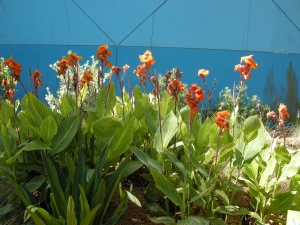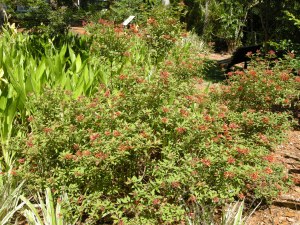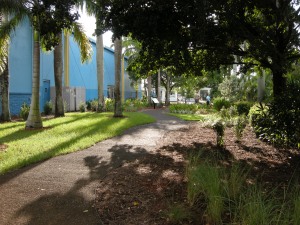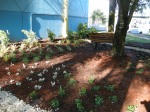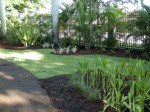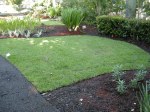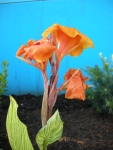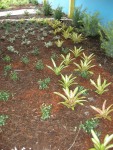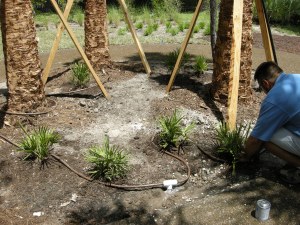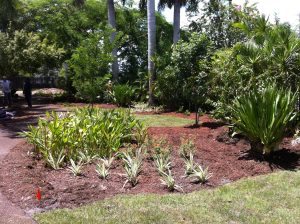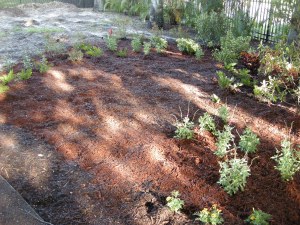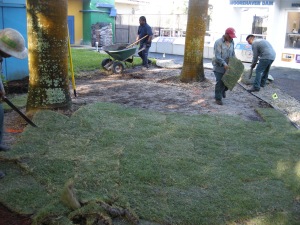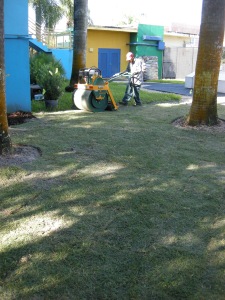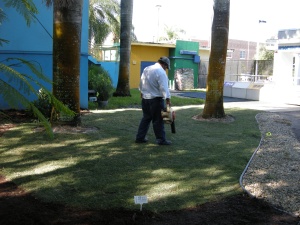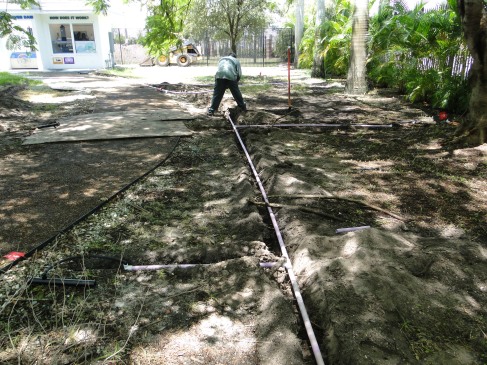Yesterday we gathered plants from local growers and received deliveries of plants and pallets of soil and mulch. Then we laid plants out in preparation for planting.
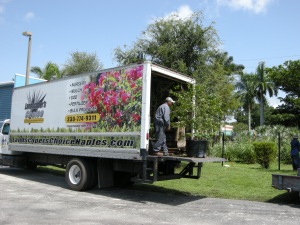
Landscapers Choice delivers plants donated by Greenscapes of Naples.
Today volunteers arrived from all points: Three men from Greenscapes in Punta Gorda, Roberta Gerber and Pablo Gonzalez from Naples, Charlie and Joan Brown from Fort Myers brought family members vacationing from the Carolinas to help. Mike Sweeney from Fort Myers was followed by Cathy Atchley from Immokallee.
The temperature reached 98 with a heat index of 106. The soil was rocky and dense with palm roots. The bags of mulch were wet and heavy. Working through the difficulties, these people did an excellent job landscaping.
FNGLA Royal Palm President John Schwind, despite recovering from knee surgery last week, brought us a cooler full of ice and drinks.
The City of Fort Myers employees helped with moving soil, digging holes and spreading mulch.
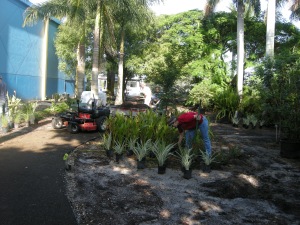
Cathy arranges Flax Lilies before planting.
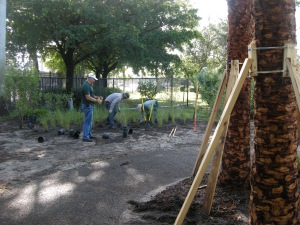
Landscape crew from Greenscapes installs a bed of Cordgrass.
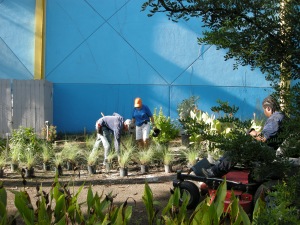
Pablo Gonzalez and Roberta Gerber create a water filtration garden.













